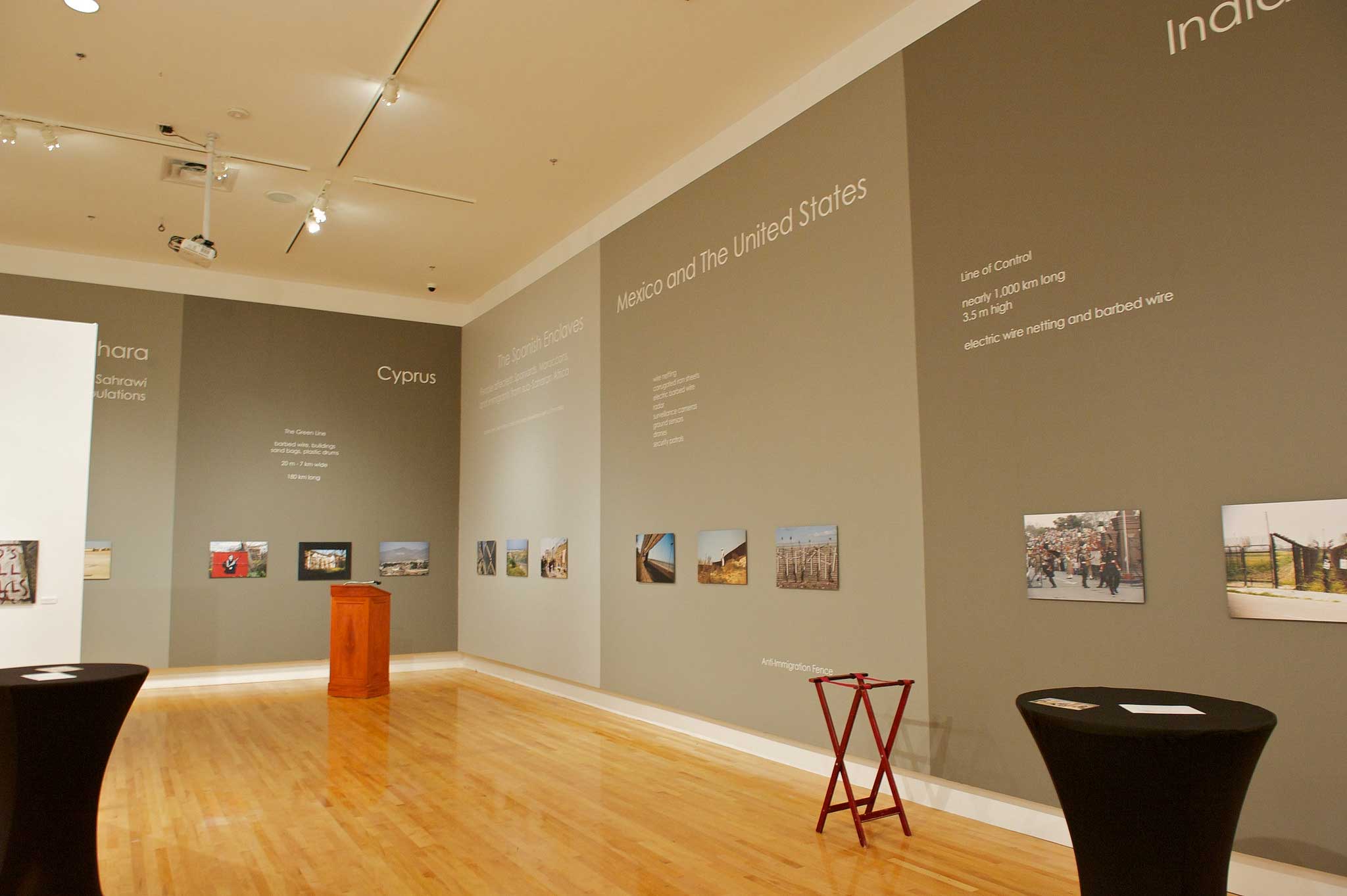Walls Between People
January 14, 2013 – April 14, 2013

Exhibition Details
Exposing the contradictions found in an open and globalized world, this exhibition focuses on the use of graffiti on contemporary barriers in:
|
Cyprus
|
North Korea and South Korea
|
|
|
India and Pakistan
|
Northern Ireland
|
|
|
Israel and Palestine
|
The Spanish Enclaves
|
|
|
Mexico and The United States
|
The Western Sahara
|
Since 2005, Alexandra Novosseloff and Frank Neisse have travelled the world in search of people living by barriers. This exhibition is the result of their photographic reportage highlighting eight different barrier walls and their specific situations.
Twenty years after the fall of the Berlin Wall, in an era marked by the free flow of goods and communication, new barriers of steel and concrete are appearing in many areas of the planet. These constructions are designed to protect from external attacks and to stop identity threats, but in effect have divided human populations and separated countries from themselves and others.
In the United States, the border fence with Mexico aims to stop illegal entry into the country. Similarly, the Spanish enclaves of Melilla and Ceuta on the coast of Morocco represent symbols of wealth for Northern Africans in search for a better life. The electrified barrier in Kashmir was constructed following the September 11th attacks to deter jihadist militants from crossing over from Pakistan. As for the wall between Israelis and Palestinians, it protects one group from the other.
Beyond the threats to which they bear witness, the walls are symbols of the duration of their conflicts. The demilitarized zone between North Korea and South Korea is a remnant of the bygone era of the Cold War. Refugees in the Western Sahara have been surviving on international aid for more than 35 years. In Cyprus, UN Peacekeeping forces continue to man the 39 year old buffer zone between Greek and Turkish communities. Finally, in Northern Ireland, communities have been living in fear of each other for more than 300 years.
These barriers are tangible signs of permanent tension and are points of unresolved conflicts frozen in time. They stand as embodiments of the many contradictions found in our open and globalized world. Beyond the immediate goals of security and protection, the ultimate objective of the barrier wall is separation from one’s own neighbour.
The exhibition features a sound installation by the artist Glenn Weyant. Mr. Weyant is a founding member and innovator of the early 21st Century Border Wall Deconstructionist Movement. Using a cello bow and implements of mass percussion to “play” the Sonoran Desert’s border walls, militarized infrastructure and assorted ephemera, both natural and human, Weyant’s internationally recognized work has been featured in films, books, photographs and audio recordings.
In 2012 Weyant’s performance of John Cage’s 4″33 upon the Nogales Wall was included in the New York Public Library/John Cage Trust retrospective: John Cage unbound A Living Archive. To learn more about Weyant’s work visit: sonicanta.com
Alexandra Novosseloff and Frank Neisse have travelled the world to document the reality of these symbols of withdrawal. They have published books on their research as well as have been featured in many exhibitions and films about the various conflicts they are documenting.
Alexandra Novosseloff holds a PhD in Political Science from the University of Paris-Pantheon-Assas. Her area of expertise lies in the field of international organizations and peacekeeping with particular emphasis on the relationship between the United Nations and regional organizations. Dr. Alexandra Novosseloff is a Senior Expert at the Peace and Security Section of the Global Governance Institute in Belgium. She is a member of the Francophone Research Network on Peace Operations at the University of Montréal. Novosseloff has held research positions at the International Peace Institute in New York, UNESCO, and the Institute for Security Studies of the Western European Union.
Frank Neisse, a graduate of the Institute d’Etudes Politiques in Paris and the University of Berlin, first worked with the French Navy and the Ministry of Defence in charge of Mediterranean issues and certain aspects of European policy on security and defence. During this time he made several trips to the Balkans and Western Sahara as part of peacekeeping operations, He later joined the European Union Police Mission in Bosnia and Herzegovina as a political advisor. Since 2006, Neisse has worked at the International Civilian Office in Kosovo where he is overseeing the reform of the security sector.